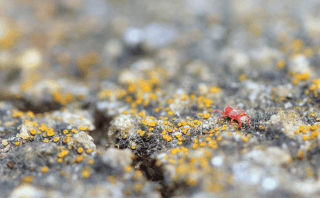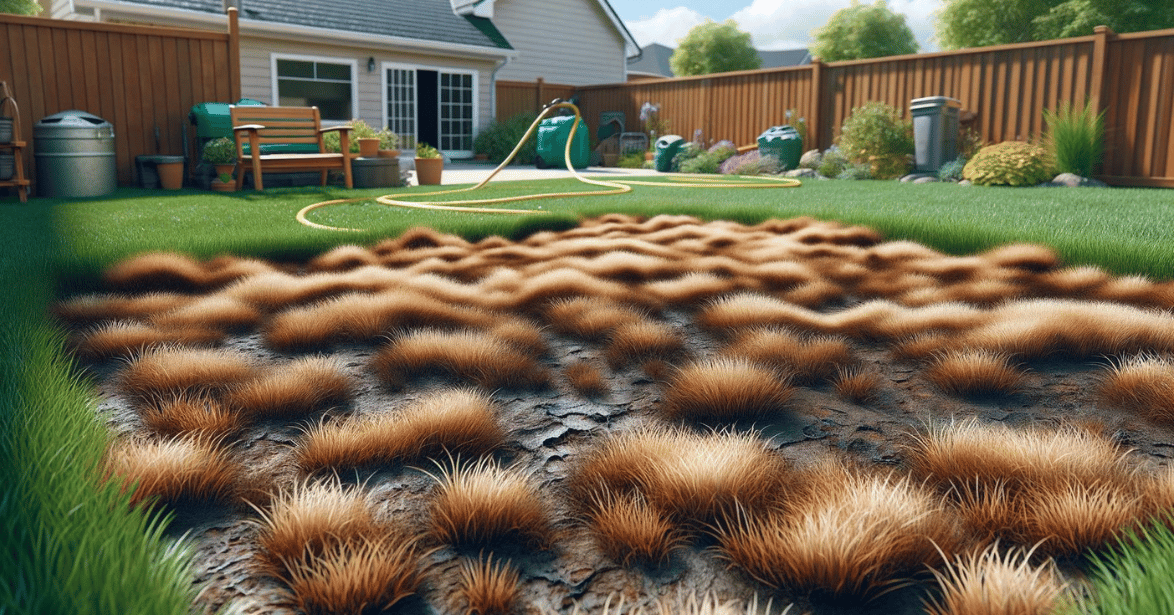Spider mites may be tiny, but they can wreak havoc on your plants if left unchecked. These minuscule arachnids are notorious for their ability to infest and damage a wide range of plants, both indoors and outdoors. This comprehensive guide will explore everything you need to know about spider mites, from their appearance to the early signs of infestation, and how to effectively detect, treat, and prevent these pesky pests from harming your greenery.
What are Spider Mites?
Spider mites (Tetranychidae family) are not insects; they belong to the arachnid class, which includes spiders and ticks. These tiny pests are typically less than 1mm in size, making them almost invisible to the naked eye. Despite their diminutive stature, they can quickly multiply and cause significant damage to plants.
Appearance of Spider Mites
Spider mites are tiny pests that are hard to spot with the naked eye. Their small size and subtle signs often allow infestations to go unnoticed until damage becomes severe. However, understanding their appearance and characteristics can help you identify them early and protect your plants.
Microscopic Size
Spider mites are microscopic in size, about 1/50th of an inch long. Because they are so small, you may need a magnifying glass or microscope to see them clearly. They resemble tiny dots moving across the surface of leaves. Their small size often leads people to mistake them for dirt or dust.
Patterns and Colors
Despite their size, spider mites have unique patterns and colors that make them identifiable under magnification. Most are red, brown, yellow, or green. Many species, such as the two-spotted spider mite, have two dark spots on their backs. These spots are a key identifying feature.
Their bodies are usually spherical or oval, and they have eight legs, similar to their relatives—spiders and ticks. These tiny "spiders" are not insects but arachnids, which sets them apart from other common garden pests.
Webbing
Spider mites are named for their ability to spin webs. The webbing is often one of the first visible signs of their presence. These fine, silk-like strands may appear on the undersides of leaves, between branches, or along the edges of plant stems. The webs not only protect spider mites from predators but also make it easier for them to move across plants.
If you notice fine webbing, especially in dry conditions, inspect your plants closely for spider mites. The webbing can also collect dust, making it easier to spot.
Relatives of Spiders and Ticks
Spider mites belong to the arachnid family, making them relatives of spiders and ticks. Like spiders, they have eight legs and spin webs. However, unlike their larger relatives, spider mites are nearly invisible to the naked eye. Their relationship to ticks also means they share certain behaviors, such as attaching to plants and feeding on their juices.
Fast Population Growth
Spider mites reproduce quickly. A single female can lay dozens of eggs every day, leading to rapid population growth. Their eggs are tiny and spherical, often laid on the undersides of leaves. In just a few days, these eggs hatch, and the next generation of spider mites begins feeding.
This fast reproductive cycle allows them to cause significant damage in a short time. Spotting them early is essential to keeping their population under control.
How to Confirm Spider Mites
If you suspect spider mites but can't see them clearly, here are some tips:
- Use a Magnifying Glass: Look closely at the undersides of leaves. You may see tiny, moving dots or eggs.
- Tap Test: Hold a piece of white paper under a suspected leaf and gently tap the leaf. Tiny specks that fall onto the paper and start moving are likely spider mites.
- Look for Damage: Check for small, yellow spots or discoloration on leaves, which are telltale signs of spider mite feeding.
- Microscopic Pictures: If you’re still unsure, many gardening guides and resources offer microscopic pictures of spider mites. These images show their distinct patterns, colors, and webbing, making identification easier.
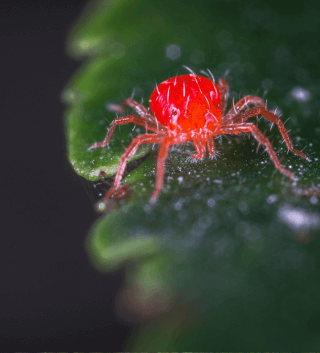
Conditions Favoring Spider Mite Infestation
Spider mites thrive in dry, dusty conditions. Hot weather helps them multiply quickly. Plants stressed by drought are especially at risk.
Indoor plants in low-humidity environments are also vulnerable. If your plants are near heating vents or exposed to dry air, keep an eye out for spider mites.
Types of Damage Caused by Spider Mites
Spider mites feed by sucking plant juices. They pierce leaves and remove nutrients. This feeding causes visible damage.
Look for small, yellow, or white spots on leaves. This speckled pattern is a common early sign of spider mites. Over time, leaves may turn brown, curl, and drop off. Severe infestations can kill entire plants.
How to Identify Damage Caused by Spider Mites
Early detection of spider mite damage is essential for effective control. Here are some telltale signs to watch for:
1. Stippling: One of the earliest signs of spider mite infestation is stippling. This appears as tiny, pale spots or speckles on the upper surface of leaves. These spots result from the mites piercing plant cells and sucking out their contents.
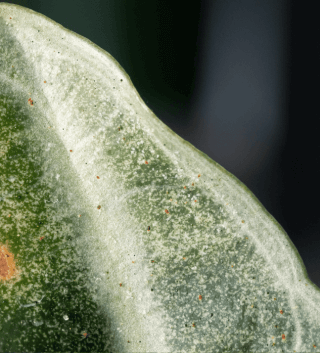
2. Webbing: Unlike spiders, spider mites are not known for building intricate webs, but they do produce fine silk threads. You may notice fine webbing on the affected plants when severe infestations occur. This webbing can give your plants a dusty or dirty appearance.
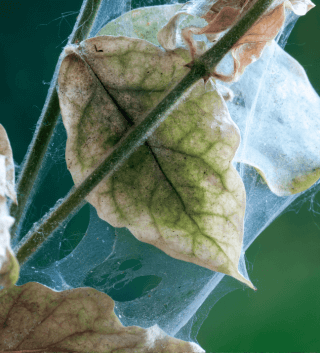
3. Yellowing Leaves: As spider mites feed on your plants, leaves may turn yellow or even bronze. This discoloration occurs as the mites damage the plant's cells, impairing its ability to photosynthesize effectively.
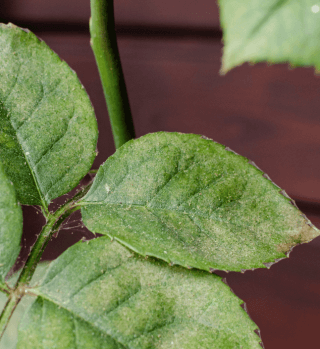
4. Leaf Curling and Distortion: In addition to yellowing, spider mite damage can cause leaves to curl or become distorted. This is particularly noticeable in severe infestations.
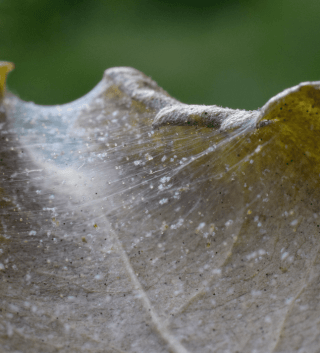
How to Get Rid of Spider Mites
Once you've identified a spider mite infestation, taking action promptly is crucial. Here are some practical methods for getting rid of spider mites:
1. Pruning: Begin by removing heavily infested plant parts, such as leaves or stems. Be sure to dispose of these clippings away from your healthy plants to prevent further infestation.
2. Use Water: Spider mites dislike high humidity. To create an inhospitable environment for them, regularly spray your plants with a fine water mist. Ensure you cover both the upper and lower leaf surfaces.
3. Insecticidal Soap: You can purchase insecticidal soap at your local garden center or make your own by mixing mild liquid soap (not detergent) with water. Apply this solution to your plants, paying close attention to the undersides of leaves where spider mites often congregate.
4. Neem Oil: Neem oil is a natural pesticide that can be effective against spider mites. Mix it with water according to the package instructions and apply it to your plants.
5. Biological Control: Consider introducing natural predators of spider mites, such as ladybugs or predatory mites, to your garden. These beneficial insects can help keep the spider mite population in check.
Prevention of Spider Mite Infestation
Prevention is the best defense against spider mites. Here are some tips:
- Keep Plants Hydrated: Water your plants regularly. Healthy, hydrated plants are less attractive to spider mites.
- Increase Humidity: Spider mites dislike humid environments. Mist your plants or use a humidifier indoors.
- Clean Your Garden: Remove debris, fallen leaves, and weeds. These can harbor spider mites.
- Inspect New Plants: Before adding new plants to your garden, check them for spider mites. Quarantine them for a few days to ensure they are pest-free.
- Dust Regularly: Dusty leaves attract spider mites. Wipe plant leaves with a damp cloth or rinse them occasionally.
Contact Strobert Tree Services
Spider mites may be small, but their potential to harm your plants is significant. By recognizing the early signs of infestation, knowing what spider mites look like, and implementing effective control methods, you can protect your greenery from these troublesome pests.
At Strobert Tree Services, we understand the importance of early detection and treatment for spider mite infestations. Our team of experienced arborists is here to assist you in identifying and preventing the damage caused by spider mites. Don't hesitate to contact us for expert advice and professional assistance in maintaining the health and vitality of your plants.


